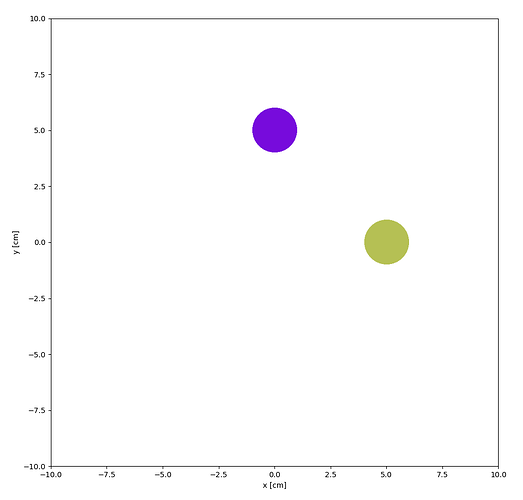Hello, I’m trying to understand the behavior of cloning and rotating. In this simple example I can only visualize the original cell, and the first rotated cell at most. Ideally I would like to see all cells together in one plot. Any help would be much appreciated!
import openmc
import matplotlib.pyplot as plt
spheres = []
sphere_surface = openmc.Sphere(x0=5.0, y0=0, z0=0, r=1.0)
sphere_region = - sphere_surface
sphere_cell = openmc.Cell(region=sphere_region)
spheres.append(sphere_cell)
cloned_sphere = sphere_cell.clone()
universe = openmc.Universe(cells=[cloned_sphere])
rotated_sphere_1 = openmc.Cell(fill=universe)
rotated_sphere_1.rotation = [0, 0, 90]
spheres.append(rotated_sphere_1)
cloned_sphere = sphere_cell.clone()
universe = openmc.Universe(cells=[cloned_sphere])
rotated_sphere_2 = openmc.Cell(fill=universe)
rotated_sphere_2.rotation = [0, 0, 180]
spheres.append(rotated_sphere_2)
print(spheres)
geometry = openmc.Geometry(root=spheres)
geometry.plot(
basis='xy',
origin=[0,0,0],
width=[20, 20],
pixels=[1000, 1000],
)
plt.show()
If I print the cells, this how they look like:
[Cell
ID = 1
Name =
Fill = None
Region = -1
Rotation = None
Translation = None
Volume = None
, Cell
ID = 3
Name =
Fill = 1
Region = None
Rotation = [ 0 0 90]
Translation = None
Volume = None
, Cell
ID = 5
Name =
Fill = 2
Region = None
Rotation = [ 0 0 180]
Translation = None
Volume = None
]

